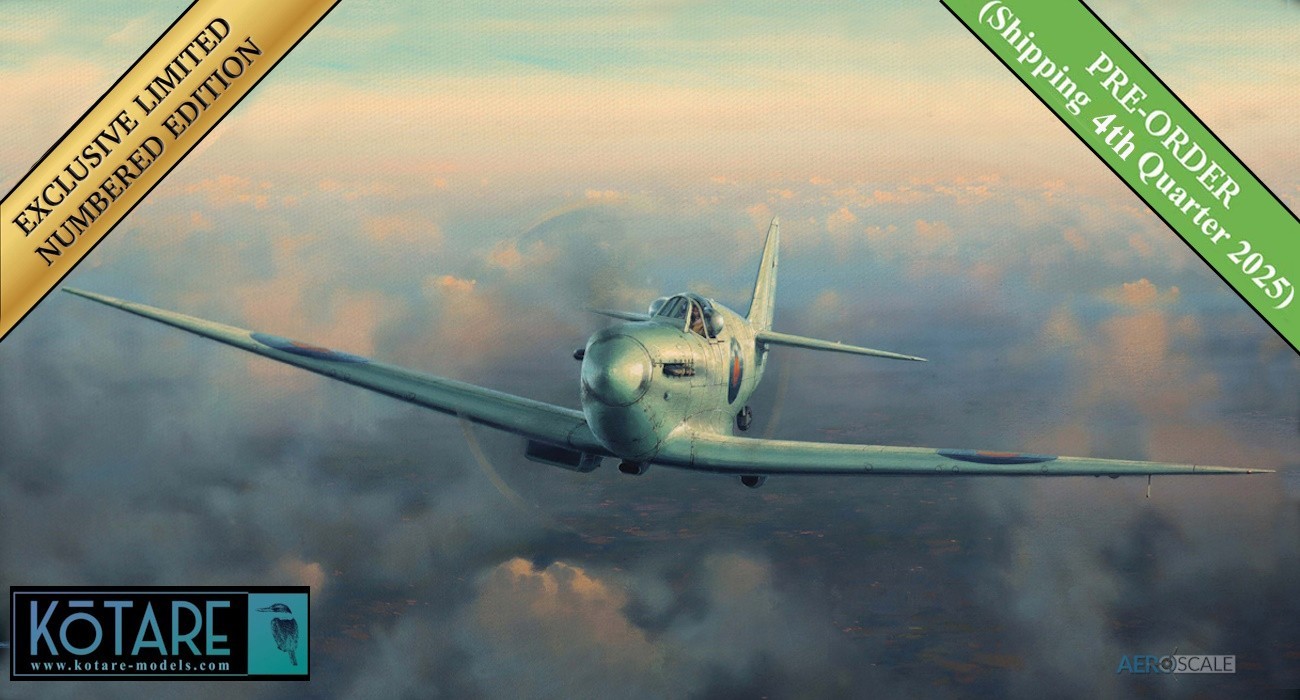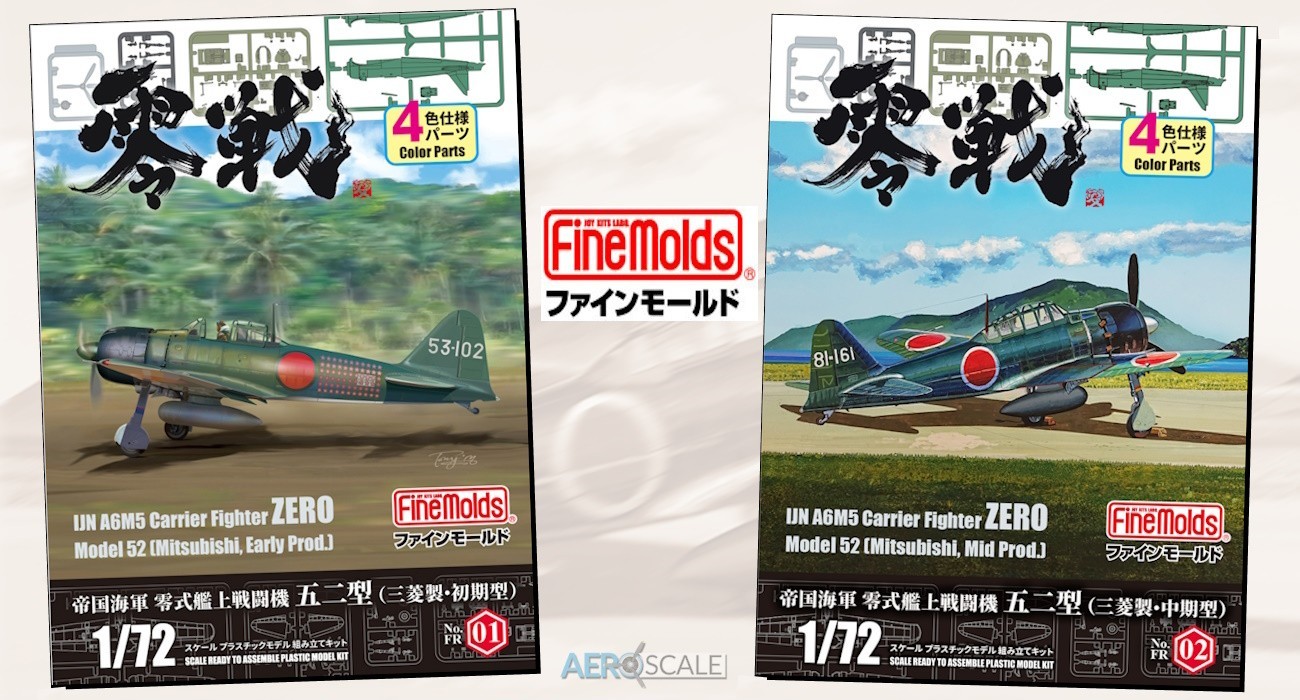
Introduction
P-38 Lightning vs Bf 109 North Africa, Sicily and Italy 1942–43 explores the aerial effectiveness of those two fighters when they met in combat. This 131st title in Osprey Publishing's series Duel is authored by Edward M. Young, and illustrated by artists Gareth Hector and Jim Laurier. This 80-page softcover is catalogued with ISBN 9781472859549, and the Osprey Short code DUE 131. It will also be available in PDF, ePUB and Mobi formats.
For generations the large, advanced and sophisticated P-38 has been touted as an air-superiority fighter that swatted the smaller simpler German fighters out of Mediterranean skies, tagged with the fearsome moniker "der Gabelschwanz Teufel," the Fork-tailed Devil by the Luftwaffe. Legendary Brigadier General Robin Olds, a P-38 ace, said in an interview, “I loved the P-38 but I got those kills in spite of the airplane, not because of it. The fact is, the P-38 Lightning was too much airplane for a new kid and a full-time job for even a mature and experienced fighter pilot. Our enemies had difficulty defeating the P-38 but, as much as we gloried in it, we were defeating ourselves with this airplane.” Legendary Experten differed in their respect of the P-38, too. Heinz Bär considered the der Gabelschwanz Teufel a certain kill, while "Macki" Steinhoff thought the P-38 was "a fast, low-profiled, fantastic fighter, and a real danger when it was above you. It was only vulnerable if you were behind it, a little below and closing fast, or turning into it, but on the attack [it was] a tremendous aircraft”.
How are those views reconciled? Osprey writes of this book;
Edward M. Young turns his attention to the bitterly fought air war in North Africa and the Mediterranean in 1942–43. Using original archival sources, official records and first-hand accounts from both USAAF and Luftwaffe veterans, as well as newly commissioned artwork and 50 carefully selected photographs from official and personal archives, this book sees two of the most iconic piston-engined fighters of their era pitted head-to-head for control of the skies in a key theatre of World War II.
Not only will this book reveal a unique story of the European air war, it provides good reference material for modelers. This title is scheduled for release on November 21, 2023.
Content

Copyright
I think the author created a well balanced text featuring "gee whiz", historical accounts, flight data, and an appreciable number of first-person observations, such as the following as stated by a German fighter pilot,
. . . an excellent means of breaking off combat was to go into a power dive from high altitude. The P-38 pilots rarely followed us. At first we could not understand this, but the mystery was explained a few months later when a captured P-38 pilot told us that in a dive, the aircraft became too fast to be pulled out safely.
If this is your first acquaintance with the P-38, you may be surprised that the large and heavy P-38 could turn as tightly as many single-engine fighters, as confirmed by P-38 pilots;
Once in a turn, with the combat flaps down, the P-38 could turn very tightly and hold its own against any fighter then in combat except the Spitfire IX.
Introduction and Chronology presents an overview of what the rest of the book will present, and a timeline. It compares and contrasts the lightweight Messerschmitt and the big Lockheed, and a disparity between German and American fighter pilots.
Chapters Design and Development and Technical Specifications deliver a useful amount of engines and armament details, development and series designations of the Bf 109 and P-38, and interesting anecdotes and trivia, i.e., how many changes did Lockheed claim were made between the P-38 and P-38E and what happened to the affected tooling, and how fast a high-ranking American officer stated the Lightning was to the press after its initial flight. Changes and improvements to the two fighters sometimes witnessed detrimental effects on performance, and those are mentioned. Beyond mere speeds and rate of climbs we also learn some technical characteristics such as the change of compression ratio of the Messerschmitt Daimler-Benz development; which were equipped with FuG VIIa and VHF FuG 16Z radios and Rüstätze sets, and weapons like the 21cm Bord-Rakete Wurfgranate 42, that tube you may have seen under Bf 109 wings. I also learned about the armored deflectors on the inboard sides of the turbosuperchargers to protect P-38 pilots from shrapnel if the turbos experienced catastrophic failure.
P-38F and G models are examined, being the primary versions used in the scope of this book. For the Bf 109 we learn of these Messerschmitts:
- Bf 109G-1
- Bf 109G-2
- Bf 109G-4 (the first of the series nicknamed Beule (bump))
- Bf 109G-6
Each aircraft receives a decent descriptive and technical overview; the author may not explain the differences between the P-38's General Electric Type B-2 and Type B-13 turbosupercharger but he does identify which P-38 variant had which turbo.
The Strategic Situation familiarizes the reader with the war, connecting the Operation Torch with the Russian Front and Pacific War. It recounts the number of aircraft of the Allies and the Axis, and losses of each side. The Combatants examines training of American and German pilots. If you enjoy learning of Luftwaffe organization and nomenclature you will appreciate the author covering the Flieger-Ausbildungsregiment (Aviator Training Regiment), Flieger-Ausbildunggruppe (Aviator Training Regiment) and an associated Flugzeugführerschule (Pilot School) A/B, and the goal of a Luftwaffeflugzeugführerschein (Luftwaffe Pilot’s License). (I certainly do.) We also learn of training aircraft types.
Combat begins by discussing tactics used by the two fighters communities, including the legendary Hauptmann Oswald Boelcke's 1916 Dicta Boelcke. The chapter recounts missions and dogfights from Torch, through the Sicily campaign, into the air raids over Italy, frequently identifying specific pilots and kills;
The squadron’s pilots in turn claimed eight enemy fighters shot down, with 2Lt William Sloan being credited with his second Bf 109. II./JG 51, however, lost only one Bf 109, its pilot suffering fatal injuries while attempting to crash-land his damaged fighter. Eastern Front ace Oberfeldwebel Otto Schultz-Wittner downed two P-38s that day, with his fifth and sixth claims for P-38s that month being his 49th and 50th victories overall.
Another of many accounts report;
By the time the German fighters broke off their attacks, ten 82nd FG pilots were missing in action, with the 96th FS losing seven P-38s. The three squadrons claimed 23 enemy fighters shot down, including 15 Bf 109s, with 2Lt Fred Selle claiming three destroyed and two damaged. The Bf 109 Gruppen lost six aircraft in combat with the P-38s...
The chapter is full of valuable information and gripping narratives.
Statistics and Analysis and Aftermath addresses the problem of overclaiming. It is particularly interesting and revealing as to which side was most accurate, comparing American and Luftwaffe claims verses admitted losses. Use of the P-38 for bomber escort in the Mediterranean Theaters of Operations (MTO) is compared to the same in the European Theater of Operations (ETO). Finally, developments in tactics and employment, and increases in Bf 109 and P-38 performance and resulting changing fortunes is covered.
Ultimately, I find this to be an eye-opening and educational book that inspires me to crack open a kit of MTO Lightnings and Messerschmitts.
Photographs, Artwork and Graphics
Osprey populates this book with a good gallery of black-and-white photographs to support the text. Quality runs the range from amateur 'grab shots' through studio quality exposures of personnel, aircraft, and scenery. Pilot "there-I-was" shots, aircraft on the ground and in the air, maintenance and wreckage scenes - any can pique one's desire to model it. Each photo is explained with captions of varying length and depth. The majority of the photographs are clear and easily viewable.
Artwork
Artists Jim Laurier and Gareth Hector created illustrations that help present what the camera missed. The artwork is nicely rendered and clear.
1. Bf 109G-4/trop
2. P-38F-1 Lightning
3. Bf 109G-2 Cockpit: keyed to 52 items
4. P-38F Lightning Cockpit: keyed with 65 items
5. Engaging the Enemy: pilot-eye view through a Bf 109 windscreen of pumping rounding into a P-38
6. P-38F/G Lightning Nose Guns
7. Diagram: Twelfth Air Force analysis of attacks on B-17 formations, listing ranges of firing, altitudes and angles
8. Diagram: P-38 “crossweaving” formation, similar to the US Navy’s “Thach Weave”
9. Diagram: P-38 squadron coverage of bomber formations
10. Combat scene, two pages depicting Anton Hafner of II./JG 51 downing the P-38 of 1Lt Norman Widen, 94th FS
Map
Bf 109 and P-38 airfields: key locations after the Operation Torch landings.
Tables
1. P-38F and Bf 109G-2 Comparison Specifications:
- Powerplant
- Dimensions (Span, Length, Height)
- Wing area
- Weights (Empty and Loaded)
- Wing loading
- Max speed
- Range
- Climb
- Service ceiling
- Armament
3. Leading Bf 109 pilots with claims against the P-38 (11/42–8/43)
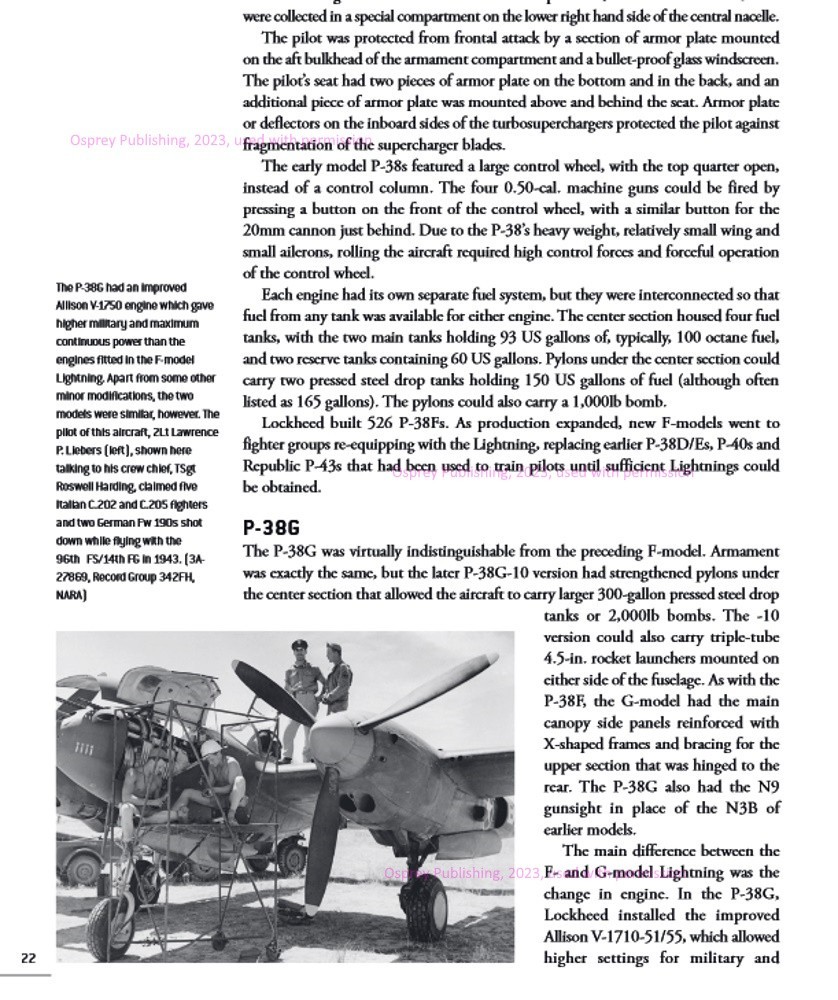
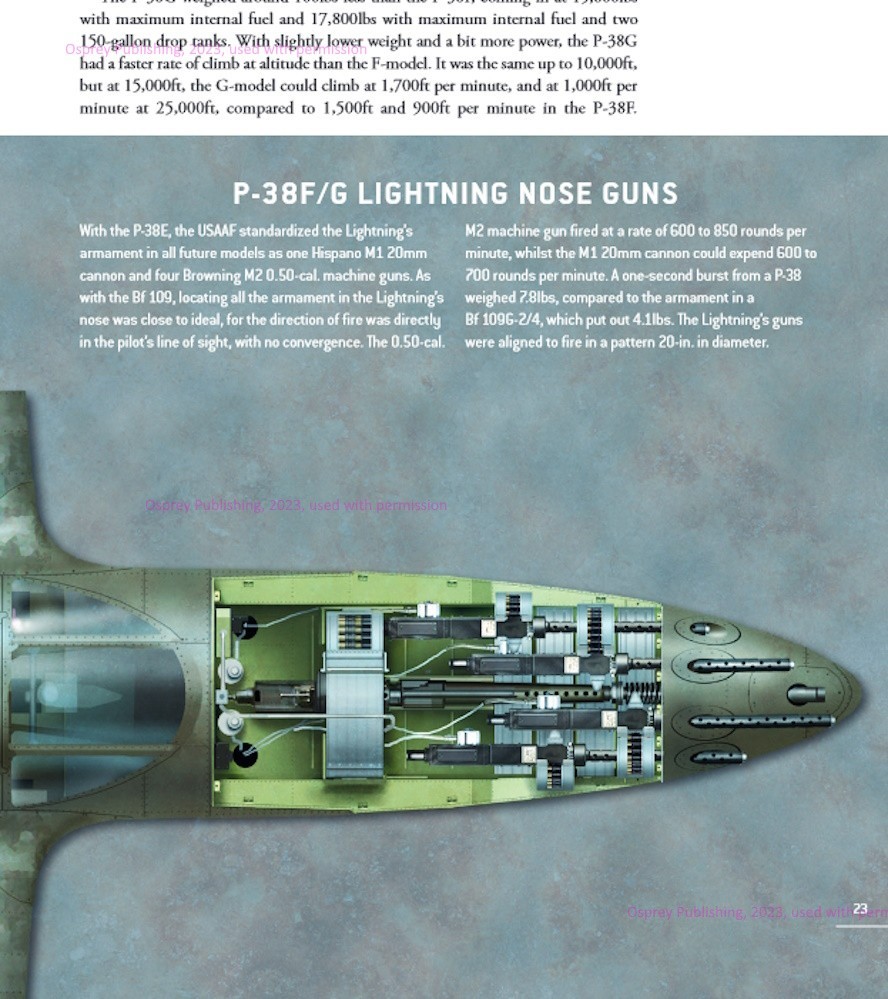
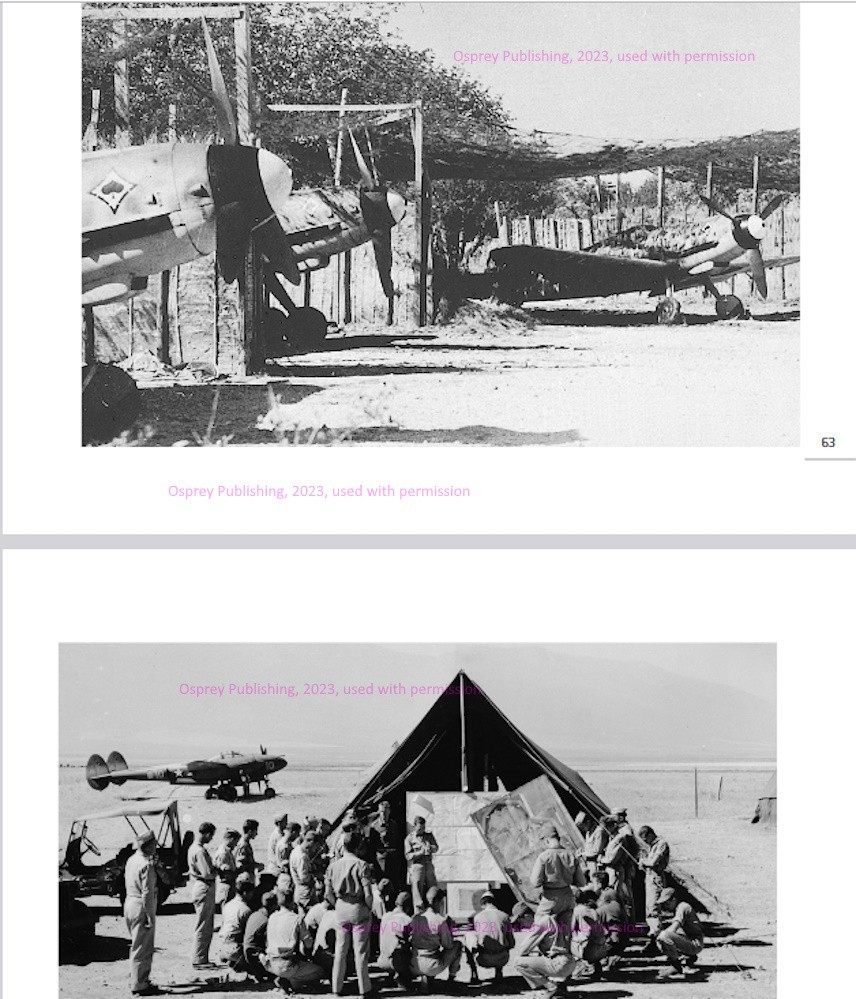


Conclusion
Since the end of the Cold War more archives have opened up concurrent with the memories of more participants of combat, as well. This combination affords researchers the ability to reassess and challenge longstanding conventional wisdom of equipment, units, personalities, and campaigns. P-38 Lightning vs Bf 109 North Africa, Sicily and Italy 1942–43 should be on a must-read list for modelers and historians of the North African and MTO air war, P-38s, Bf 109s, German and American fighter groups, to name a few subjects. I usually manage to read 10 pages a sitting and yet this is one of those books that I couldn't put down. New analysis fueled my appreciation for this amazing book and I finished it quickly.
The book features detailed text, excellent artwork and photographic support, a useful map to orient the reader, and many other enticing characteristics. Modelers may be inspired by aircraft and airfield scenes. Quotes from pilots involved enhance the content.
I have no knocks against this book except that I reached the end of the book too quickly. I am very enthusiastic about this title and certainly recommend it.
Please remember to mention to Osprey and retailers that you saw this book here - on Aeroscale.






















